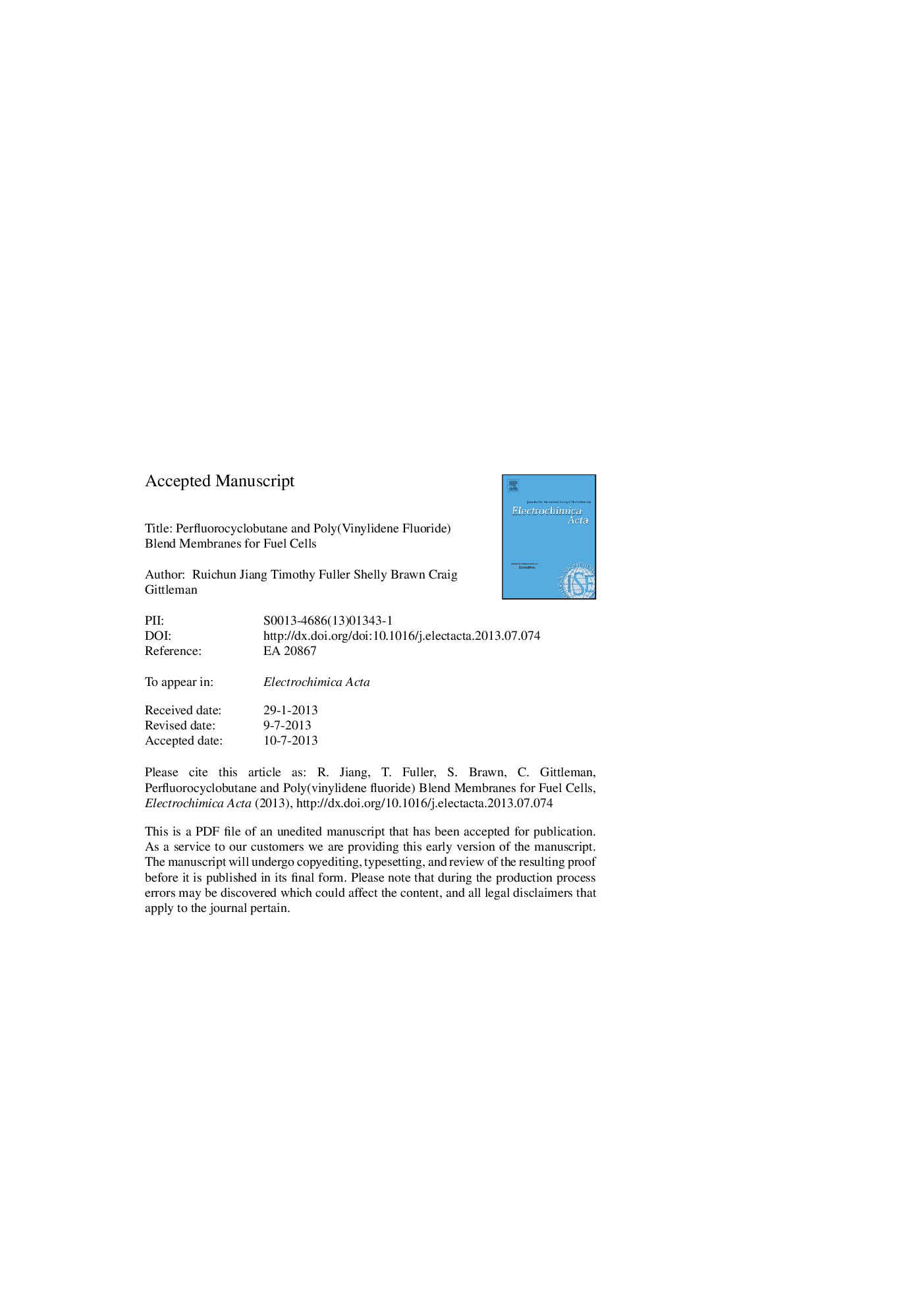| Article ID | Journal | Published Year | Pages | File Type |
|---|---|---|---|---|
| 6615539 | Electrochimica Acta | 2013 | 42 Pages |
Abstract
Polymer electrolytes based on block copolymers are considered promising proton exchange membrane (PEM) materials for fuel cell applications. A new class of block copolymers of perfluorocyclobutane (PFCB) units with pendant side chains containing sulfonic acid groups have recently been developed and studied for fuel cell applications. In order to enhance the membrane mechanical and hydrothermal stability, sulfonated PFCB copolymers are blended with fluoropolymers such as poly(vinylidene fluoride) (PVDF). Membrane fundamental properties (e.g., proton conductivity, gas permeability, water uptake) and fuel cell performance and durability were evaluated as a function of PVDF content. The proton conductivity and fuel cell performance only decrease slightly with PVDF content at PVDF blend levels of up to 30Â wt.%. However, at the PVDF levels higher than 40Â wt.%, the proton conductivity and fuel cell performance decrease rapidly with increasing PVDF content. The PFCB/PVDF composite membranes have lower hydrogen, oxygen and nitrogen gas permeability as well as a higher ratio of conductivity to permeability than perfluorosulfonic acid PFSA membranes (e.g., Nafion®). Membrane hydrothermal swelling is significantly reduced by blending sulfonated PFCB with PVDF. This reduced swelling leads to improved membrane mechanical durability as measured by increased lifetimes in RH cycling tests with increasing PVDF content.
Related Topics
Physical Sciences and Engineering
Chemical Engineering
Chemical Engineering (General)
Authors
Ruichun Jiang, Timothy Fuller, Shelly Brawn, Craig Gittleman,
